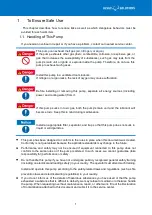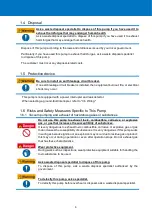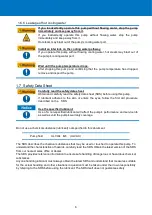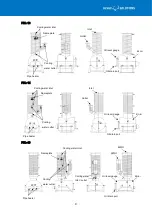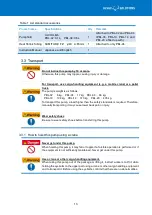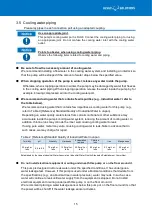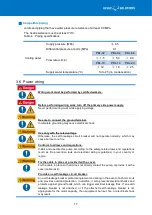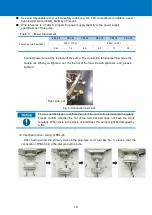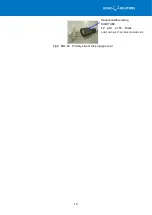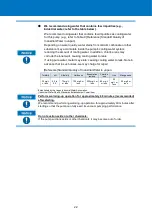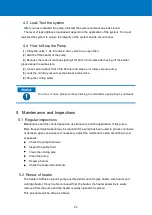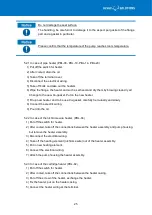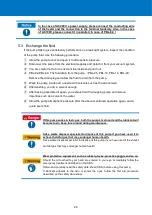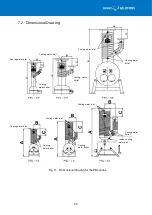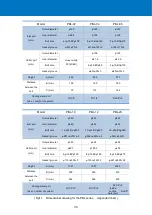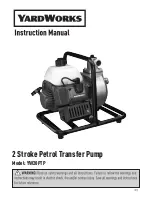
15
3.5
Cooling water piping
Please lay pipes in each connection port using an adapted coupling.
Use an appropriate joint.
This pump's cooling water port is Rc3/8. Connect the cooling water piping to it using
an appropriate joint. Do not confuse the cooling water inlet with the cooling water
outlet.
Points to observe when using cooling water piping
Observe the following items related to cooling water and piping.
●
Be sure to flow the necessary amount of cooling water.
We recommend installing a flowmeter in the cooling water system and installing an interlock so
that the pump will be stopped if the amount of water drops below the specified value.
●
When stopping operation of the pump in winter, release any water inside the pump.
Otherwise, when stopping operation in winter, the pump may be damaged by water that freezes
in the cooling water piping. When stopping operation, release the water inside the pump by, for
example, blowing compressed air into the cooling water port.
●
We recommend using water that contains few impurities (e.g., industrial water; refer to
the table below).
We recommend using water that contains few impurities as cooling water for this pump (e.g.,
refer to Table 9 [Reference] Standard Quality of Industrial Water in Japan).
Depending on water quality, water stains from calcium carbonate or other substance may
accumulate inside the pump's cooling water system, reducing the amount of cooling water. In
addition, chlorine ions may corrode the inner wall, causing cooling water to leak.
If using pure water, metal may elute, causing cooling water to leak. Note in advance that in
such cases, we may charge for repair.
Table 2
[Reference]Standard Quality of Industrial Water in Japan
Turbidity
pH
Alkalinity
Hardness
Evaporation
residue
Chlorine
ions
Iron
Manganese
20 mg/L or
less
6.5 to 8.0
75 mg/L or
less
120 mg/L or
less
250 mg/L or
less
80 mg/L or
less
0.3 mg/L or
less
0.2 mg/L or
less
Established by the Japan Industrial Water Association (Industrial Water Quality Standards Establishment Committee).
●
Do not install electrical equipment or wiring underneath this pump or on the floor around it.
This pump is designed not to leak water under the specified conditions. It has undergone a
water leakage test. However, if this pump is used under abnormal conditions that deviate from
the specifications (e.g., an abnormal rise in water pressure), water may leak. In such a case,
water will continue to leak until water supply from the equipment is stopped. Do not install
electrical equipment or wiring underneath this pump or on the floor around it.
We recommend placing a water leakage sensor below this pump or on the floor around it so that
the power will be shut off if the water leakage sensor activates.
Summary of Contents for PBL Series
Page 1: ...SK00 4813 DI 002 07 No 190628...
Page 2: ......
Page 45: ......
Page 46: ......
Page 47: ......

